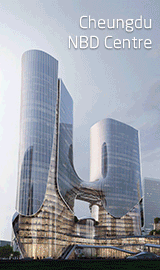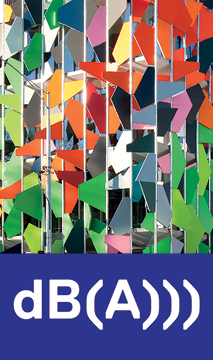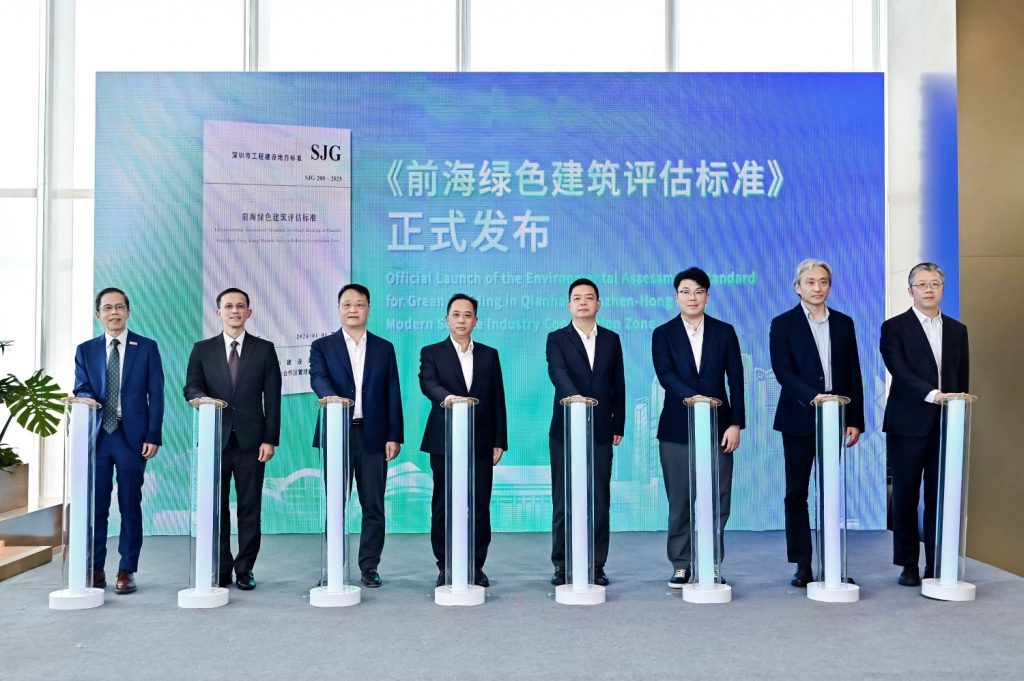
Qianhai, 20 August 2025 – A ceremony was held at the Qianhai Chow Tai Fook Financial Centre to launch the Environmental Assessment Standard for Green Buildings in the Qianhai Shenzhen-Hong Kong Modern Service Industry Cooperation Zone, known as the “Qianhai Green Building Standards.” This standard serves as a benchmark for the Greater Bay Area and is the first of its kind aimed at integrating green building assessment practices between Shenzhen and Hong Kong. It introduces an innovative “One Assessment, Dual Certification” mechanism, allowing a project to simultaneously obtain certification from both Mainland China and Hong Kong through a single assessment. The launch of the Qianhai Green Building Standards marks a significant advancement in the standardization of design and construction between the two regions. Officials from various government departments attended the event, including the Liaison Office of the Central People’s Government in the Hong Kong Special Administrative Region, the Department of Housing and Urban-Rural Development of Guangdong Province, the Development Bureau of the Hong Kong Special Administrative Region, and the Shenzhen Housing and Construction Bureau. They were joined by over a hundred guests from industry associations, businesses, and academic experts from both Guangdong and Hong Kong, all witnessing this milestone moment.
Mr. XIE Hui-hui, Deputy Director-General of the Authority of Qianhai Shenzhen-Hong Kong Modern Service Industry Cooperation Zone provided an overview of the Qianhai Green Building Standards. It is collaboratively published by the Housing and Construction Bureau of Shenzhen and the Authority of the Qianhai Shenzhen-Hong Kong Modern Service Industry Cooperation Zone, known as the “Authority of Qianhai”, with contributions from the BEAM Society Limited and the China Academy of Building Research, along with eight leading green building institutions in the Greater Bay Area’s green building sector, including the Hong Kong Green Building Council, Shenzhen Qianhai-Hong Kong Green Building Certification and Advisory Limited, and Shenzhen Green Building Association. This standard is formulated based on the New Buildings and Existing Buildings tools of the Hong Kong BEAM Plus, while also incorporating local practices and regulatory requirements specific to Qianhai and Shenzhen. By combining Hong Kong’s top-notched green building standards with the practical realities of Qianhai and Shenzhen, the standard provides a robust and accurate framework for measuring the green building performance of both new and existing structures in the Qianhai Shenzhen-Hong Kong Modern Service Industry Cooperation Zone. Implementing the Qianhai Green Building Standards will enhance the coordination of green building assessments and certifications across the Guangdong-Hong Kong-Macao Greater Bay Area, create a viable pathway for large-scale low-carbon development in Qianhai and Shenzhen and facilitate the internationalization of the green building industry and green financial services in both regions.
Building a New Paradigm for the Integration of Shenzhen-Hong Kong Green Building Standards
To implement the measures outlined in the Comprehensive Deepening Reform and Opening Up of the Qianhai Shenzhen-Hong Kong Modern Service Industry Cooperation Zone and the Qianhai Overall Development Plan, the Qianhai Authority remains committed to facilitating collaboration between Hong Kong and Shenzhen, particularly in integrating building standards and practices within the construction and engineering fields. In September 2024, the Qianhai Authority signed a strategic cooperation agreement with the BEAM Society Limited, creating a collaborative framework focused on five key areas: pilot green building assessments, standard development, talent cultivation, digital platform development, and coordination of green financing. In November of the same year, the Qianhai Authority, along with the China Academy of Building Research and the BEAM Society Limited, began developing the Qianhai Green Building Standards, which aims to provide a green building assessment tool covering the entire building lifecycle. By December, iconic buildings in Qianhai, including the Qianhai Chow Tai Fook Financial Tower, were selected for pilot assessments, providing empirical support for the development of the Qianhai Green Building Standard. The Qianhai Green Building Standards completed all its development and testing in just 9 months, significantly faster than the typical 2-year timeframe required for conventional construction and engineering standards.
Mr. FUNG Yiu Man, Acting Head of Project Strategy and Governance Office of the Development Bureau of the Hong Kong SAR Government remarked that the Qianhai Green Building Standards serve as a prime example of collaboration between Shenzhen and Hong Kong in establishing construction and engineering standards. He expressed hope that the two regions will continue to work together to promote the development of green buildings in the Greater Bay Area, progressing towards the national dual carbon goal.
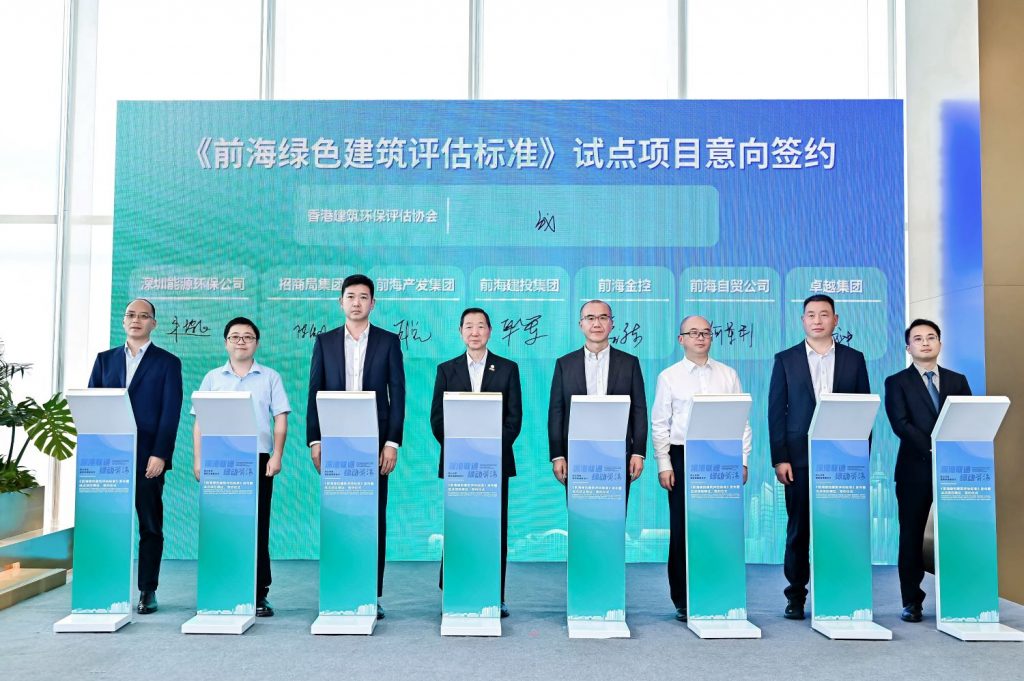
Three Innovative Features of the Qianhai Green Building Standards Set to Become an Example for Cross-Border Building Standard Development
Deputy Director-General, Department of Housing and Urban-Rural Development of Guangdong Province highlighted that the Qianhai Green Building Standards create a pathway for mainland practitioners to gain professional qualifications in Hong Kong through training, thereby fostering collaboration in professional development between Shenzhen and Hong Kong. He also noted that these standards establish a connection between green construction and green capital, enabling opportunities for cross-border green financing through green building certification, which helps address funding challenges for low-carbon transitions.
The Qianhai Green Building Standards have three innovative features:
- “One Assessment, Dual Certification” Mechanism: The innovative “One Assessment, Dual Certification” mechanism allows projects to obtain dual certification according to both Qianhai standards and Hong Kong BEAM Plus assessment standards through a single assessment process, thereby lowering the cost of project proponents in obtaining multiple green building certifications.
- Channelling Green Capital into Low-Carbon Building Technologies: The established assessment framework allows for accurate quantification of the effectiveness of low-carbon building technologies, facilitating the allocation of green capital to appropriate applications of these technologies. Furthermore, with the standards linked to BEAM Plus, project proponents can leverage the assessment results to access green financing opportunities in Hong Kong, along with the city’s comprehensive incentives for green bonds and sustainability-linked loans.
- Building a Green Building Professional Talent Platform in the Greater Bay Area: The Qianhai Green Building Standards encourages the alignment of professional qualifications, enabling project managers to earn green building professional credentials from multiple regions within the Greater Bay Area through a single training and assessment process. This feature enhances the technical expertise of green building talent in the Bay Area and promotes professional exchange and collaboration in the field of green building.
Demonstration of Exemplary Green Performances by Four Pilot Projects
During the development of the Qianhai Green Building Standards, four iconic building projects, including the Qianhai Chow Tai Fook Finance Centre, were selected for pilot certification using the Hong Kong BEAM Plus assessment system. All of these projects achieved excellent results in the certification process, showcasing the feasibility of implementing green building standards within the Qianhai context, the ability of Qianhai’s
built projects to meet international standards, and the Authority of Qianhai’s leadership in sustainable development practices.
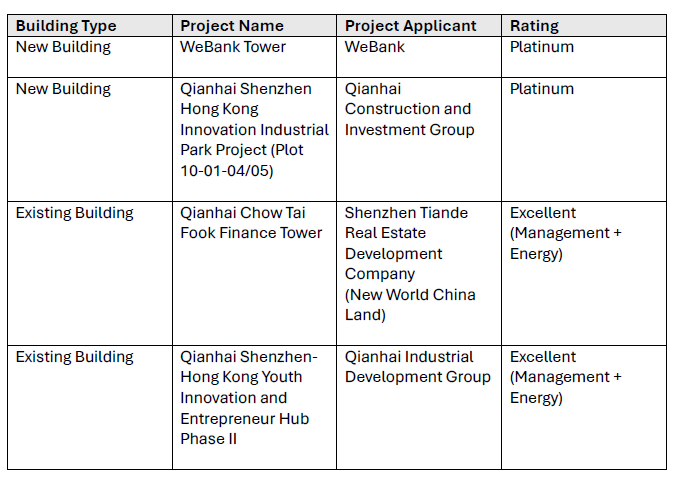
The Qianhai Shenzhen-Hong Kong Modern Service Industry Cooperation Zone is accelerating the application of Qianhai Green Building Standards. To date, 15 built projects have committed to implementing these standards, encompassing both new and existing buildings. This growing momentum in applying the Qianhai Green Building Standards is set to further accelerate green building practices across the Qianhai Shenzhen-Hong Kong Modern Service Industry Cooperation Zone, effectively embedding sustainability as a core identity of the area.
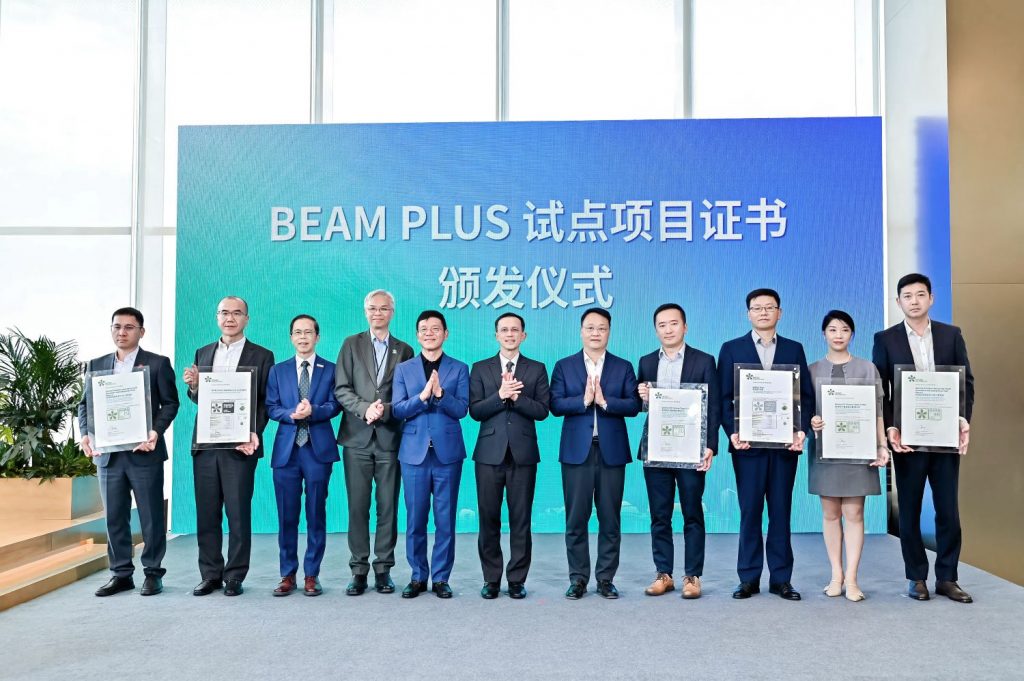
Ensuring The Effectiveness of the Qianhai Green Building Standards
The BEAM Society Limited will fully support the implementation of the Qianhai Green Building Standards. First, BEAM Society Limited will provide services to facilitate the “One Assessment, Dual Certification” mechanism, allowing project proponents to obtain a green building certificate that meets both local Qianhai requirements and BEAM Plus standards through a single assessment. Second, the BEAM Society Limited will create a high-calibre talent and training platform to cultivate green building professionals to be recognized by major regions within the Greater Bay Area. Finally, the BEAM Society Limited will establish a robust framework for green building assessment, data disclosure and data governance, ensuring that government, financial institutions, and certification bodies can trust the legitimacy of the assessment results to qualify for policy support and financial incentives.
The BEAM Society Limited is actively promoting for the adoption of BEAM Plus and Hong Kong-style green building assessment advisory services beyond Hong Kong. Since the launch of this initiative in 2024, more than 30 projects have engaged in these services in major cities across Mainland China, including Beijing, Shanghai, and Guangzhou. The initiative is also expanding to Southeast Asia and other regions involved in the Belt and Road Initiative (BRI), showcasing the versatility and global recognition of BEAM Plus and Hong Kong-style green building assessment advisory services. The BEAM Society Limited remains committed to enhancing its green building assessment offerings to align with international trends and the evolving landscape of the green building sector.





